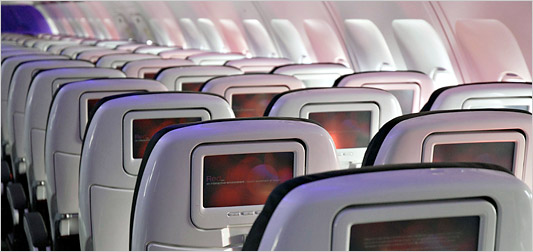Over at the Cranky Flier there’s an interesting article that takes a close look at how an inflight entertainment (IFE) system gets installed on an aircraft.
Having spent several years defining and deploying such systems for a major North American carrier in a previous life, over a decade ago, it’s always interesting to see if and how the process has changed. Over the years IFE equipment has certainly become lighter and much more powerful and functional. This is good news for the airlines — less weight equals less fuel burn — and better for customers.
On the other hand, defining, planning and installing IFE systems has remained much the same. Through necessity the regulatory hurdles and requirements to installing such equipment onboard an aircraft are immense. Combine this with the logistics of installing new seats with screens and controls, seat electronics boxes, central computers, surface antennae and flight attendant panels and you can see why it is such a lengthy process. To their credit some airlines have managed to refine the process to get complete or incremental installations done during an A Check (regular overnight maintenance at the airport gate), rather than over a Heavy C Check (once every 18 months or so in the hangar).
All this bodes well for most travelers. On an increasing number of carriers they’ll now be able to satisfy their addiction to constant interconnectedness via onboard WiFi and internet connectivity. Though, for some this is cold comfort. The days when one could read a hearty novel without fear of being disturbed by a flickering screen, an overly loud air-to-ground phone conversation, a group conference call via inseat video on Skype are rapidly coming to an end.
